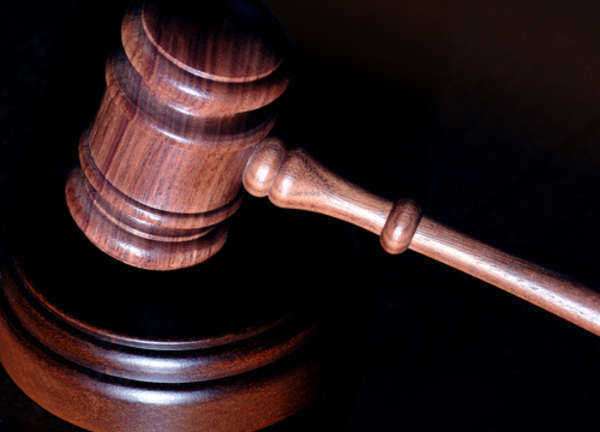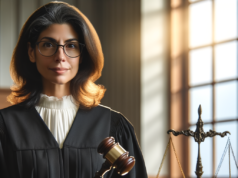Table of Contents

In 1965, the Supreme Court of the United States made one of the most significant decisions on the constitutionality of birth control regulations, namely the landmark case of Griswold v. Connecticut. The case had broad implications for reproductive rights, privacy protection, and the separation of powers, influencing the legal landscape of the country for decades to come. This article provides an overview of Griswold v. Connecticut, discussing its background, proceedings, outcomes, and impact on the US legal system.
Background of the Case
Estelle Griswold was a director of the Planned Parenthood League of Connecticut, a non-profit organization that promoted access to family planning and sexual health services. In 1961, Griswold and her colleagues were arrested for violating a Connecticut state law that prohibited anyone from using or providing contraception, even to married couples. Griswold argued that the law violated her constitutional rights to privacy, liberty, and equal protection under the law. She also challenged the law on the basis of its vagueness, arguing that it lacked clear guidelines on what constituted a criminal offense.
Proceedings of the Case
Griswold’s case went through several levels of court before reaching the Supreme Court. Initially, the Connecticut Circuit Court found her guilty of violating the contraception ban and fined her $100. The Connecticut Appellate Court upheld the conviction, but reduced the fine to $10. The case was then appealed to the US Supreme Court, which agreed to hear it in 1965.
The Supreme Court held a hearing on March 29, 1965, where Griswold’s lawyer argued that the Connecticut contraception law violated the right to privacy that is implicit in the Bill of Rights, particularly the First, Fourth, Fifth, Ninth, and Fourteenth Amendments. The lawyer also cited several previous Supreme Court cases that recognized privacy as a fundamental right, including Meyer v. Nebraska (1923) and Pierce v. Society of Sisters (1925). In response, the state of Connecticut argued that the law was a valid exercise of its police power to promote public morality and the sanctity of marriage.
Outcomes of the Case
On June 7, 1965, the Supreme Court issued a 7-2 decision in favor of Griswold, striking down the Connecticut contraception law as unconstitutional. The Court held that the law violated the right to marital privacy, which was “older than the Bill of Rights,” and was protected by several constitutional provisions. The Court further explained that the right to privacy encompassed “the individual’s interest in avoiding disclosure of personal matters” and “the right to be left alone.” The Court also rejected Connecticut’s argument that the law served a legitimate state interest, stating that the law was “an unreasonable and arbitrary interference with the right of marital privacy.”
The Griswold decision had several implications for US law and society. First, it established a constitutional right to privacy, which became a bedrock principle for future cases on reproductive rights, abortion, LGBT rights, and other areas. Second, it recognized that the government had limited power to regulate personal and intimate behavior, especially within the family unit. Third, it set a precedent for judicial review of state laws that violate individual rights, signaling a shift toward a more activist role for the Supreme Court in protecting civil liberties. Fourth, it galvanized the birth control movement and helped pave the way for the FDA’s approval of oral contraceptives later that year.
Impact on the US Legal System
The Griswold decision has had a profound impact on the US legal system over the past 50 years. Here are 10 interesting facts about the case and its legacy:
- The Griswold decision established a right to privacy that is not explicitly mentioned in the Constitution. Instead, the Court relied on several “penumbras” of the Bill of Rights to infer the existence of privacy rights, such as the First Amendment’s protection of free speech and the Third Amendment’s prohibition of forced quartering of soldiers.
- The Griswold decision was groundbreaking because it recognized a right to privacy in the context of reproductive health, which was not previously recognized as a constitutional issue. This paved the way for later cases such as Roe v. Wade (1973), which extended the right to privacy to a woman’s decision to have an abortion.
- The Griswold decision was not without controversy and criticism. Justice Potter Stewart, who dissented from the decision, argued that the Court had “discovered” a new fundamental right that was not grounded in the Constitution or the history of American law.
- The Griswold decision was a precursor to several other cases that expanded the right to privacy, such as Eisenstadt v. Baird (1972), which invalidated laws that banned unmarried couples from accessing contraception, and Lawrence v. Texas (2003), which struck down state sodomy laws that criminalized homosexual conduct.
- The Griswold decision has also been used to support arguments for same-sex marriage, as it recognizes the dignity and autonomy of individuals in shaping their intimate relationships and identities.
- The Griswold decision was one of the first cases to apply the doctrine of substantive due process, which holds that certain rights are so fundamental that the government cannot abridge them without a compelling reason. This doctrine has been used in various contexts, such as the right to education, the right to vote, and the right to marry.
- The Griswold decision has been cited in over 300 cases since it was decided, including landmark cases such as Planned Parenthood v. Casey (1992), which affirmed the core holding of Roe v. Wade, and Obergefell v. Hodges (2015), which struck down state bans on same-sex marriage.
- The Griswold decision was based in part on the legal theory of natural law, which posits that certain inherent rights exist beyond the purview of governments or societies. This theory has been the subject of much debate among legal scholars and philosophers.
- The Griswold decision was also influenced by the cultural and social changes of the 1960s, which saw a shift in attitudes toward sexuality, gender roles, and reproductive freedom. The decision reflected the Court’s recognition of changing social mores and the need to accord greater respect for individual autonomy and dignity.
- The Griswold decision remains controversial and contested today, with some groups advocating for stricter regulation of reproductive health and others arguing for greater protection of privacy and personal autonomy. The case serves as a reminder of the ongoing struggle to balance individual rights against state interests, and the key role that the Supreme Court plays in shaping this balance.
In conclusion, Griswold v. Connecticut was a landmark case that established a constitutional right to privacy and struck down a restrictive contraception law. The case had significant implications for reproductive rights, privacy protection, and the separation of powers, and has influenced US law and society in many ways. While the case remains contentious and debated, it stands as a symbol of the ongoing struggle for individual freedom and equality under the law.
Griswold v. Connecticut: The Background
The case of Griswold v. Connecticut dealt with a Connecticut law that outlawed the use of any instrument, drug, or pharmaceutical to serve as contraception for pregnancy. The case revolved around a woman named Estelle Griswold. This woman served as the director of the Planned Parenthood in the state of Connecticut.
Planned Parenthood is an institution that teaches women about safe sexual activities and promotes responsibility regarding sex. Planned Parenthood’s goal is to prevent unwanted pregnancies and the transmission of sexually transmitted diseases. In Griswold v. Connecticut, the state’s Planned Parenthood chapter was accused of violating the previously-mentioned state law: the Planned Parenthood was accused of advocating and distributing the use of prophylactics.
The case of Griswold v. Connecticut dealt with the due process clause. Due process is the government’s obligation to maintain, respect, and uphold the legal rights of American citizens. The United States government is required to retain a person’s human rights and liberties. The United States government must treat citizens in a fair and respectful manner.
Griswold v. Connecticut: The Case Profile
Estelle Griswold was arrested for violating a Connecticut law which forbids individuals from using any drugs, instruments or pharmaceuticals as contraception for pregnancy. In response to her arrest, Griswold claimed that the state of Connecticut violated her 14th Amendment rights, including her right to privacy. Estelle Griswold, in Griswold v. Connecticut, claimed that the state’s laws infringed on her personal freedoms that she is guaranteed as an American citizen.
Griswold v. Connecticut was decided on June 7th of 1965. The case of Griswold v. Connecticut was heard in the United States Supreme Court.
Griswold v. Connecticut: The Verdict
The United States Supreme Court overturned the Connecticut law which forbade the use of prophylactics as contraception. The United States Supreme Court ruled that the state law was in direct violation of the right to privacy within a private setting. In addition, the United States Supreme Court explained that the 9th Amendment to the United States Constitution serves as protection with regard to the Bill of Rights. Because of the state’s violation of civil liberties and the unlawful expansion of government power, the United States Supreme Court ruled in favor of Griswold.






















